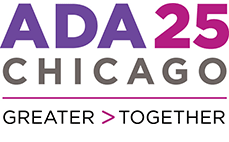
US Department of Transportation Building in Washington, DC. Photo by Flickr user Marabuchi
For this year’s National Day of Civic Hacking, we’re writing up primers on different civic issues to help people get a better understanding of the issues as they start working on projects.
Below, we’ve listed out places where you can data on transportation, some examples of projects centered around transportation, and some resources online to help you with your project.
Transportation:
Transportation policy impacts many different aspects of city life. Transportation policy impacts economic development, the environment, and overall quality of life. Transportation is also something that cities, states, and the federal government spend a lot of money on. In 2009, total transportation expenditure by State and local governments reached the record level of $270 billion. Despite these expenditures, the American Society of Civil Engineers gives the country’s infrastructure a grade of D+. Specifically, the ASCE is calling for additional investments to repair roads, bridges, and rail infrastructure.
Data Resources:
The US Department of Transportation has over 1600 transportation related data sets at data.gov along with several developer resources. These developer resources include:
- Bureau of Transportation Statistics (BTS) Open Source Data API
- Federal Motor Carrier Safety Administration (FMCSA) SaferBus API
- Federal Railroad Administration (FRA) Safety Data APIs
- Federal Aviation Administration (FAA) APIs
- National Highway Traffic Safety Administration (NHTSA) API
At the local level, Chicago also has several sets of data related to transportation including:
- Average Daily Traffic Counts
- Daily Boarding Totals for the Chicago Transit Authority
- Historical Congestion Estimates by Region API
The State of Illinois’ Department of Transportation also publishes data on transportation including:
- Average Annual Daily Traffic 2010
- IDOT Rest Areas Map
Potential Partners
The best civic apps are built through partnerships between technologists, residents, and the people who work on the front lines. Here’s a list of potential partners you can work with in your own cities to help build projects that can make an impact.
- City Transportation and Transit Agencies: Chicago Department of Transportation, New York’s MTA, or Boston’s MTBA.
- Regional Planning Authorities: Regional planning authorities are responsible for helping to plan major transportation projects across wide regions. This is often a requirement for these projects to receive federal transportation dollars. Because of that, these agencies often have data useful for transportation projects or experts who can help with projects. Some examples of these agencies are the Chicago Metropolitan Planning Council, Association of Bay Area Governments, and the Miami Valley Regional Planning Commision.
- Cycling Groups: Cycling groups try and advocate for policy reforms to promote cycling in cities. These groups may be familiar with current city policies, popular bike routes, and trouble areas. These groups include Critical Mass, San Fransisco Bicycle Coalition, and Bike Austin.
- Bikeshare Systems: Many cities are now installing bike share systems to increase cycling in their cities. Many of these bike share systems regularly release data about ridership and usage that can be used to power apps.
Examples of Transportation Related Apps:
SpotHero: SpotHero is a civic startup that efficiently connects parking demand and parking supply. SpotHero allows parking spot owners to earn income by renting their spot when it’s unoccupied.
SpotHero was the winner of the Apps for Metro Chicago Challenge in 2012. Since then, they’ve graduated from TechStars/Excelerate , raised 2.5 million in VC funding, expanded to seven cities and has hired twenty people.
Chicago Bike Crash Map: Crash data for Chicago in 2005-2012 where a bicyclist or pedestrian was the first point of impact by a driver’s automobile, as collected by responding law enforcement and maintained by the Illinois Department of Transportation.
TextMyBus – Built by Code for America for the the Detroit Department of Transportation. This app lets riders text a number to see when the next bus is.
Other resources on the web
Streetsblog: Streetsblog is a national network of blogs that cover transportation issues on a daily basis.
People to follow on Twitter
@SteveVance – Transportation reporter for Streetsblog Chicago and one of the co-organizers of the Transportation of OpenGov Night Night.
@Gabe_Klien – Former transportation chief for DC and Chicago.
@Anthony_Foxx – Current US Secretary of Transportation
@JoesphKopser – CEO and Founder of Ridescout, a transit app that aggregates data from multiple transit agencies
 For this year’s National Day of Civic Hacking, we’re writing up primers on different civic issues to help people get a better understanding of the issues as they start working on projects.
For this year’s National Day of Civic Hacking, we’re writing up primers on different civic issues to help people get a better understanding of the issues as they start working on projects. At Chi Hack Night, Zachary Damato and Nick Wesley from The Naru Project talked about their non-profit that focuses on incorporating artificial wetlands into our city’s river systems.
At Chi Hack Night, Zachary Damato and Nick Wesley from The Naru Project talked about their non-profit that focuses on incorporating artificial wetlands into our city’s river systems. Please join us on May 22nd to discuss opportunities to improve public and open accessibility data in our community.
Please join us on May 22nd to discuss opportunities to improve public and open accessibility data in our community.